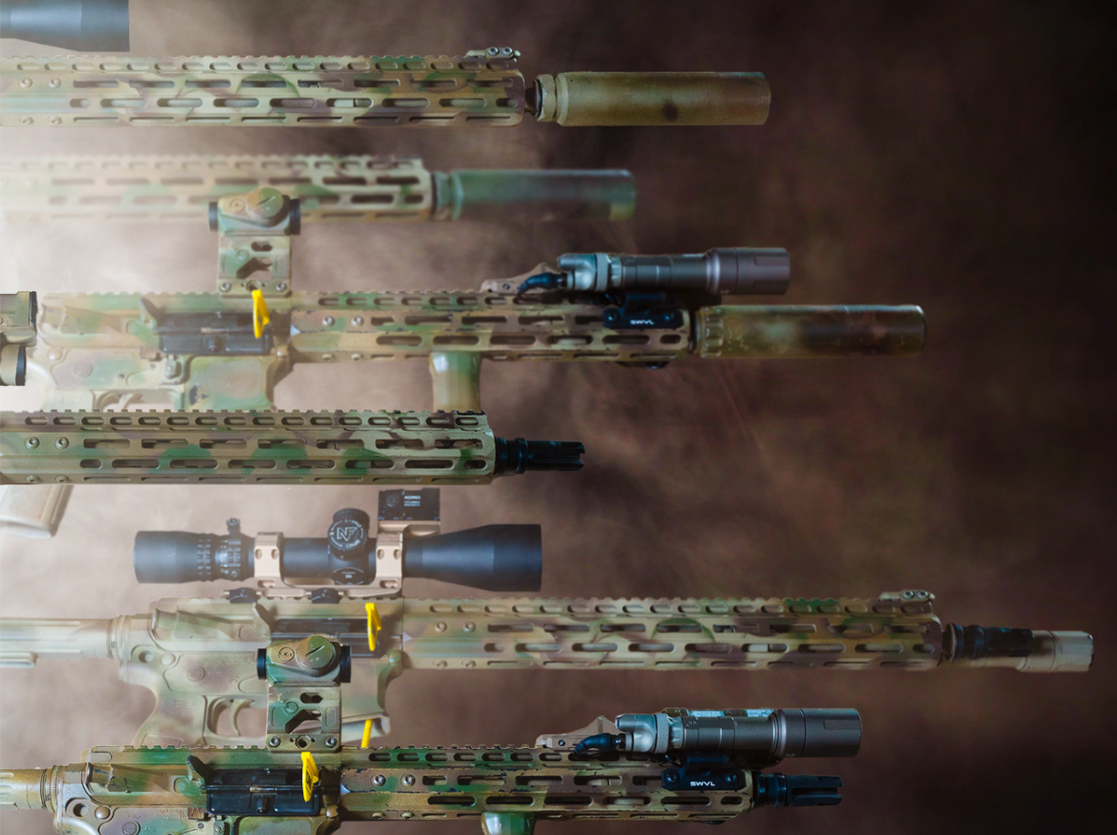Posted by Tim Marshall on Apr 22nd 2024
Choosing the Right Barrel Length for CQB Rifles
Many in the realm of Close Quarters Battle (CQB) debate the best barrel length for rifles. Should you opt for a compact PDW-sized firearm or does the traditional 16-inch barrel still hold sway? Let's dive into the pros and cons of each, shedding light on why some choose what they do.
Short Guns: Maneuverability and Compromise
Advocates of shorter rifles, typically in the 10.5 to 12.5-inch range, champion their maneuverability and compactness as prime assets in tight quarters. With the ability to suppress these firearms while maintaining a similar length to an unsuppressed 16-inch rifle, proponents argue that they offer a tactical edge. This is especially true when navigating confined spaces where the ability to keep the weapon close and easily maneuverable is important.
However, short rifles come with their fair share of drawbacks. The most notable among these is the intense concussion they produce, which can disorient not only teammates but the shooter as well. Muzzle management becomes trickier when working together with partners, as the shorter barrel increases the risk of inadvertently muzzling them when online, potentially compromising safety in high-stress situations. Additionally, limited accessory space and ergonomic challenges pose further hurdles for users of shorter rifles.
Longer Guns: Ballistics and Ergonomics
On the other end of the spectrum are longer rifles, typically featuring barrels ranging from 14 to 18 inches. These firearms boast superior ballistics, with higher velocities that enhance their effectiveness upon impact. Ergonomically, they offer ample space for accessories and a more comfortable shooting experience, allowing for better control and stability.
However, the length of these rifles can become a hindrance in close quarters, especially when suppressed, as maneuverability is compromised. The risk of muzzling partners is reduced compared to shorter rifles, but it remains a concern, particularly in dynamic environments where movement is constant.
Finding Middle Ground: The Rise of the 13.7 Rifle
Recognizing the trade-offs inherent in both short and long rifles, many shooters are gravitating towards a middle ground. The emergence of the 13.7 rifle, striking a balance between compactness and ballistic performance, has gained traction among professionals and enthusiasts alike.
By suppressing a 16-inch rifle or opting for a slightly shorter barrel, users can achieve a manageable overall length while retaining the ballistic advantages of a longer barrel. The additional space afforded by a longer rail provides ergonomic benefits, particularly for larger individuals, without sacrificing too much in terms of maneuverability.
Conclusion: A Personal Choice
Ultimately, the choice of barrel length for a CQB rifle is a personal one, dependent on factors such as individual preferences, operational requirements, and the specific demands of the environment. While shorter rifles offer maneuverability in tight spaces, they come with compromises that may not suit every shooter. Conversely, longer rifles provide superior ballistics and ergonomics but may be cumbersome in close quarters.
As the debate continues to go on, shooters need to weigh the pros and cons carefully, considering their own needs and preferences. Whether opting for a shorter firearm, a traditional 16-inch rifle, or something in between, the key is to find the right balance between agility, firepower, and comfort, ensuring readiness for whatever challenges may arise in the field.

